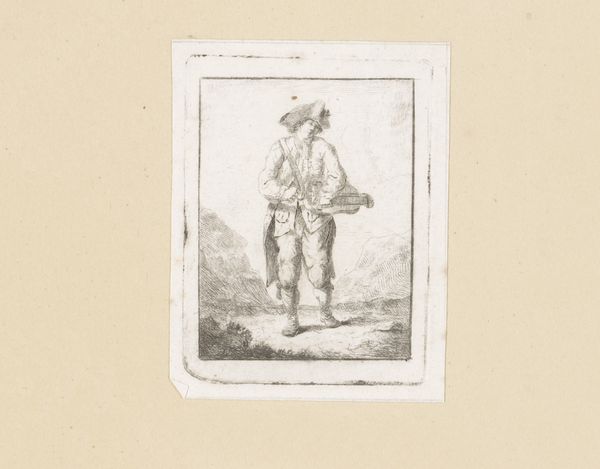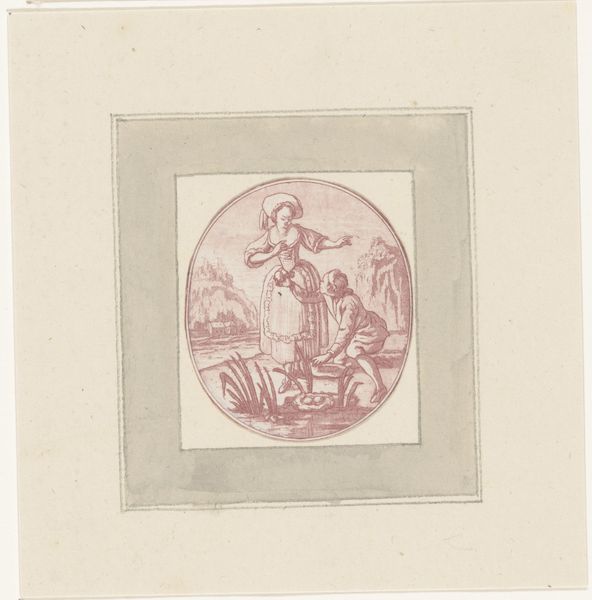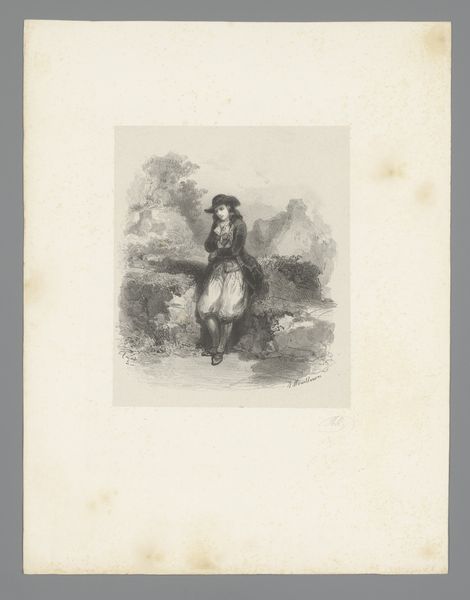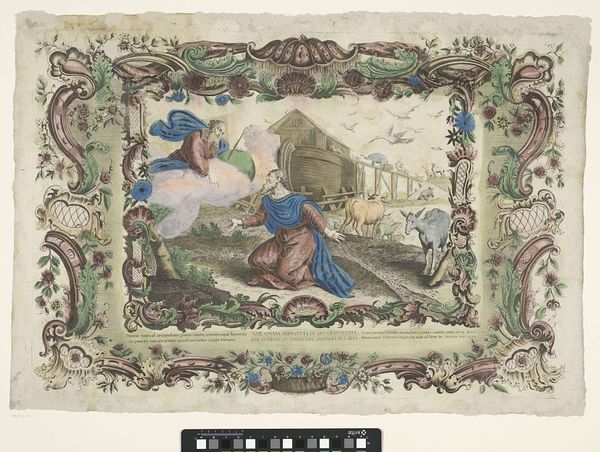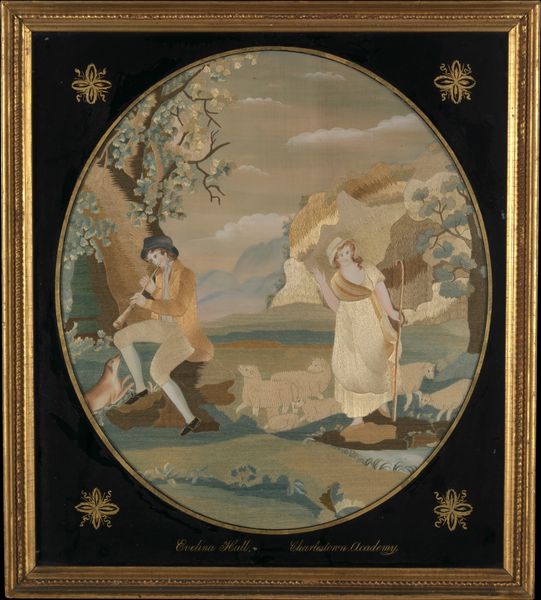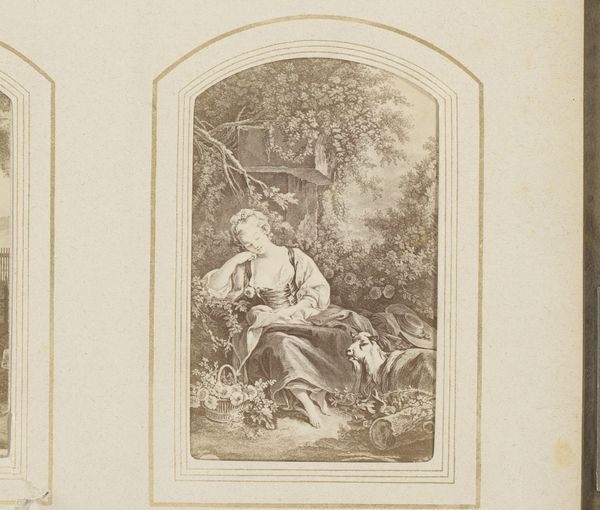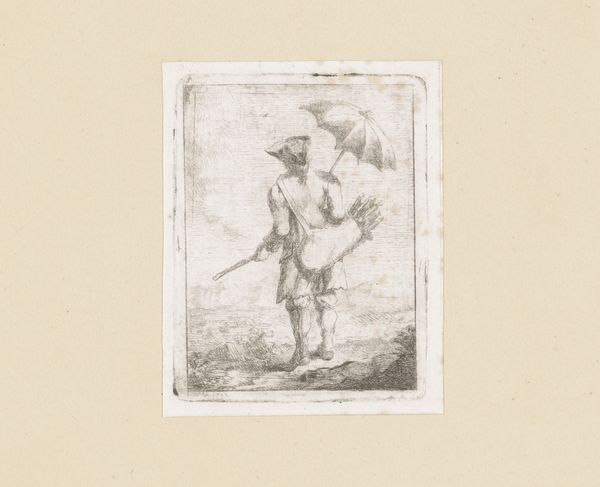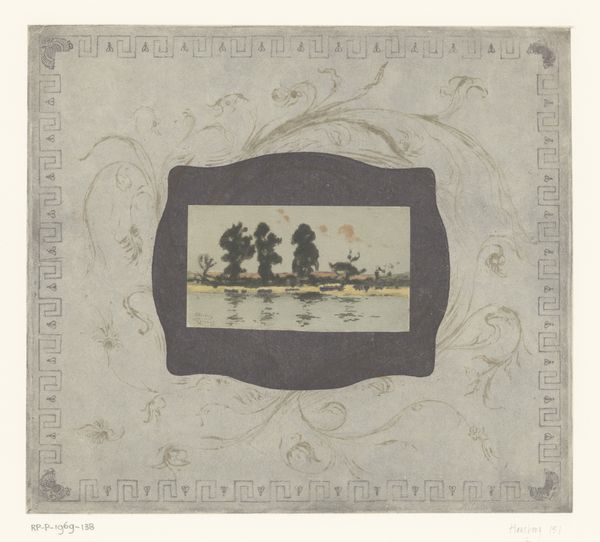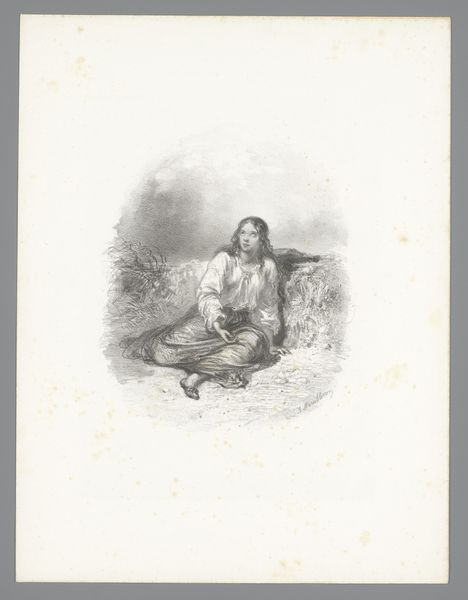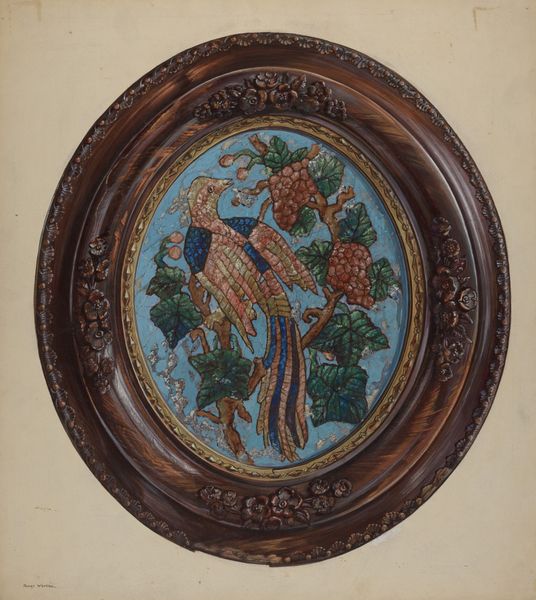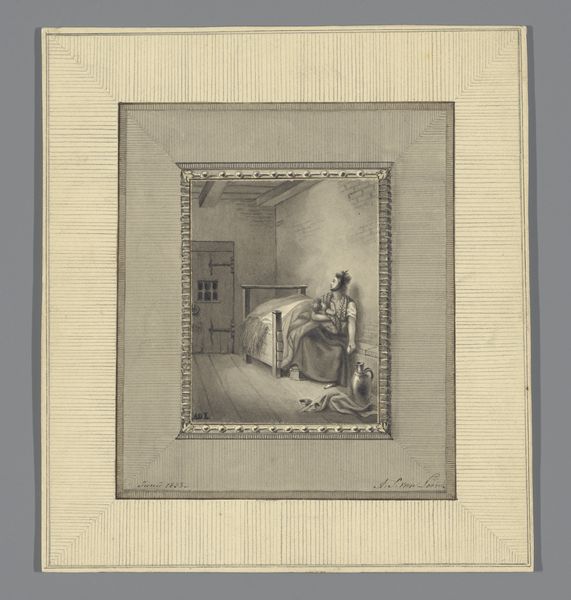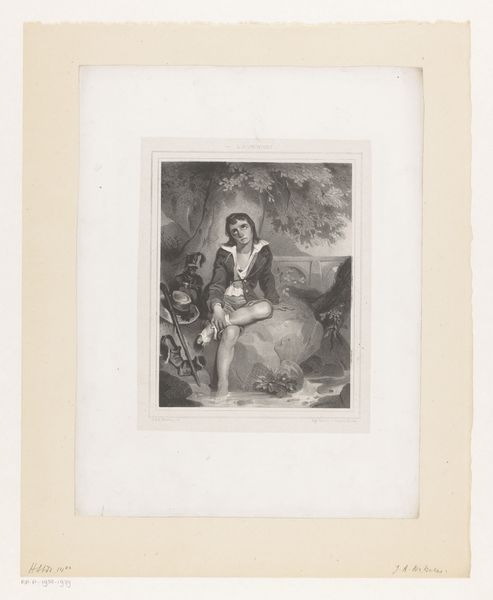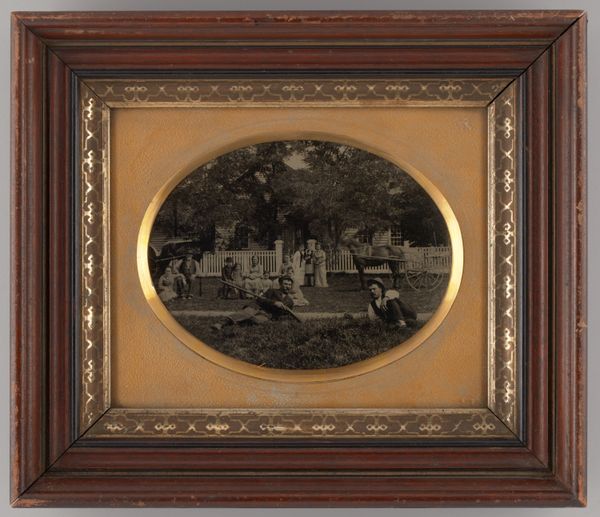
drawing
#
drawing
#
water colours
#
possibly oil pastel
#
handmade artwork painting
#
oil painting
#
acrylic on canvas
#
underpainting
#
painting painterly
#
watercolour bleed
#
watercolour illustration
#
watercolor
Dimensions: overall: 55.5 x 45.7 cm (21 7/8 x 18 in.) Original IAD Object: 15 1/2" high; 14 3/8" wide
Copyright: National Gallery of Art: CC0 1.0
Curator: Here we have "Painted Panel from Pullman Car Interior" from around 1939. Editor: My immediate impression is one of soft light and gentle movement. The colors are muted, but the composition is dynamic, drawing the eye into the circular center. Curator: These panels were part of the luxurious experience that Pullman cars offered to a specific class of traveler in the pre-war era. Consider it—visual entertainment that democratized art within a designed environment. Editor: I see how the artist uses the golden circle to frame the subject—the young woman and the surrounding landscape. It creates a focal point but also isolates the figure within an idealized space. The way she advances invites narrative speculation: where she is going, and why? Curator: Precisely, there is this nostalgic embrace of the rural landscape. It almost romanticizes the everyday, and that plays into a larger narrative of escapism which these Pullman cars sold. The pastoral theme is quite on-brand for the era, wouldn’t you say? Editor: Definitely. I find interesting how the muted palette contrasts with the decorative green curlicues at the corner; they feel a bit out of place—or perhaps, an echo of the interior’s architecture into the natural painted sphere? Curator: Well, this decorative flourish and pastoral framing speaks to something deeper; It speaks to an attempt to reconcile a society undergoing profound economic change, with notions of a tranquil and accessible landscape. The artwork sells the promise. Editor: But on closer look, that golden border traps the woman. And I would agree that this hints at the limitations placed upon the traveler's actual access, doesn’t it? Curator: Absolutely, this decorative element, a detail intended to enhance pleasure, functions to simultaneously reinforce social and economic stratification, reminding us whose experiences mattered within a public space. Editor: Indeed. Looking closely, what initially seemed light and airy takes on a more complicated, subtly critical perspective. A fascinating example of art embedded in everyday life! Curator: It truly shows how art can both reflect and subtly critique its surrounding socio-political landscape.
Comments
No comments
Be the first to comment and join the conversation on the ultimate creative platform.
